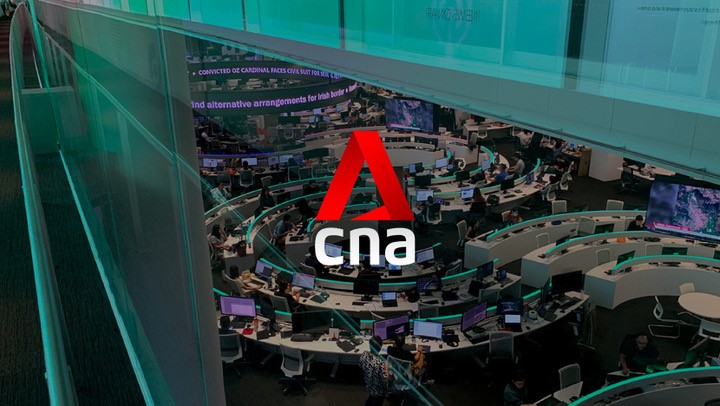DETROIT: Roland Busch, CEO of Siemens AG, says his company is well-positioned to help handle the problems as the world’s attention turns to climate change. Siemens, founded in Munich, specializes in using digitisation and automation to improve the efficiency of buildings, factories, and railroads. It also has a medical section with technology that could help stroke sufferers receive faster treatment.
Siemens has forecasted a 5% to 7% annual revenue increase over the next three to five years, based on the expectation that demand for its energy efficiency solutions will continue to rise. This year, Siemens’ stock has increased by nearly 14%. According to FactSet, 13 of the 21 industry experts that track the firm rate it as a buy. Busch has worked with Siemens for more than a quarter-century and was named CEO in February. He recently spoke with the Associated Press about energy conservation, factory efficiencies, medical imaging, and the future of rail travel. For clarity and length, the interview was modified. Q: The US and other countries are emphasizing energy-efficient buildings as a means of combating climate change. Is that what’s driving a lot of your growth forecasts?
A: We talked about our main markets, which are about €440 billion and are increasing at 4% to 5%. Sustainability, automation, and digitalisation are already driving these sectors, which is, I believe, where all the stimulus money is going. Why would you put money into something old when you can put money into something new? Your new administration has set clear goals for expanding or defending technology superiority against others, including China, in the long run. We have something to offer. In the United States, we have a thriving software business. A significant presence in the field of construction technologies. Q: How will manufacturing automation assist a consumer? A: Let me begin by discussing the car business. You must handle all variants if you are constructing a combustion engine and a hybrid-electric battery vehicle in the same plant since items are personalized. We can assist with either the automation software or the personalization (with many combinations of options). Another example is what we do in the pharmaceutical industry. We not only assist them get the vaccines to market faster, but we also help them scale up faster. When a new mutant appears, a new type of immunization is required to combat it quickly. You make a COVID vaccine one day, and another for whatever sickness you’re fighting the next. Q: How does Siemens assist in the production of vaccines?
A: You make a virtual replica of your products. You’re replicating the appearance of your merchandise. GSK is a pharmaceutical business that supplies vaccine manufacturers with raw materials. They must conduct numerous experiments and experiment with various combinations. We ran simulations with them to see if they could reduce time to market by 20% or more. We create a distinct twin of your manufacturing process and examine how to eliminate bottlenecks in assembly lines and automate production. You don’t need to attempt it and alter it again once you’ve simulated it. You finish your manufacture quickly and correctly the first time. Q: How does Siemens improve the efficiency of a building? A: Buildings still account for roughly 70% of total energy usage. The temperature is soaring. The majority of the work is completed if your roof is properly covered. You have automation technology, which makes better use of all of your devices. The decentralized energy system is the next big thing. When you combine it with rooftop photovoltaic (solar cells) and, eventually, a (natural) gas engine, you have energy for a campus with a smaller carbon footprint. Battery storage, with renewable energy to power it all. It’s pointless to cool a building if no one is inside. We have a building management software company. You simply tailor it to the needs of the people who are in the room now or who will be in the room later. Q: You produce rail carriages for high-speed rail and transit systems. Given the drop in public transport ridership caused by the coronavirus, can you expect growth? A: Public transportation operators believe that as life returns to normal, this situation will resurface. It’s a problem right now, but it’ll go away. Any large city that does not have public transportation will be unable to function. We talked about whether or not we should invest in the next generation of high-speed trains. We’ve got prototypes up and running. It’s possible that this is one of Siemens’ best trains. It travels at a speed of around 300 kilometers per hour. It operates at the maximum level of efficiency. It has a profile that is aerodynamic. It is lightweight and works with a variety of propulsion systems. Flights will eventually connect fewer and fewer national cities. You can completely eliminate airplanes wherever you have a solid one-to-one connection with a high-speed train. We have a good global business. That, I believe, has a bright future. Q: You claim that medical imaging can lower the cost of stroke therapy in half. How would you go about doing that? A: If you have a stroke in some cities, you’ll be better off. When a person has a stroke, an ambulance is dispatched to transport them to a hospital. You are given a scan. Then you’ll require surgery from an expert. Frequently, the person does not sit at the hospital nearest to where the stroke occurs. So you either fly the surgeon to the hospital or put the victim on a helicopter. This will take another half-hour to an hour. That’s a problem if every second counts. We acquired a company that does high-precision surgery using a joystick. You have the best surgeon working with good equipment a hundred miles away, ensuring that you have a really precise movement. This significantly reduces the amount of time required. I believe they are in the process of obtaining permission for some of the operations. It will take several years./n



